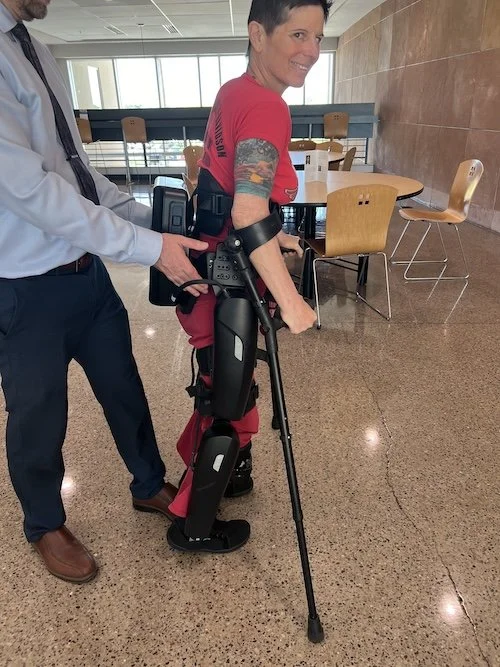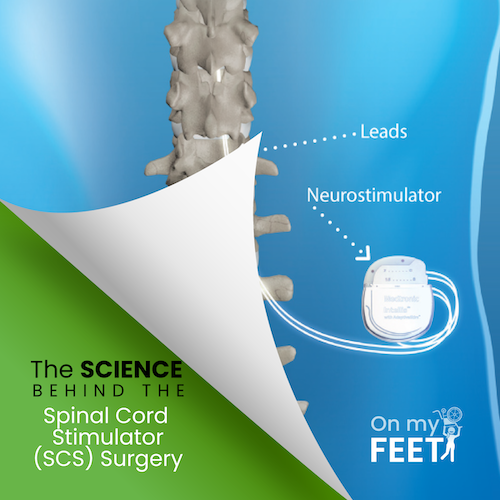Five Common Myths and Misconceptions About Spinal Cord Stimulation
Spinal cord stimulation (SCS) has emerged as a promising treatment for managing chronic pain and improving the quality of life for individuals with spinal cord injuries. However, despite its benefits, several myths and misconceptions persist, often causing unnecessary hesitation or confusion about this treatment. In this post, we’ll address and clarify five of the most common myths and misconceptions about SCS.
Myth 1: Spinal Cord Stimulation Cures Paralysis
One of the most prevalent myths about spinal cord stimulation is the belief that it can cure paralysis. While SCS has shown promise in enhancing motor function and reducing pain for some patients, it is not a cure for paralysis. The primary purpose of SCS is to manage chronic pain by delivering electrical impulses to the spinal cord, which can modulate pain signals and, in some instances, stimulate movement. However, it’s essential to understand that SCS is a tool for symptom management, not a cure for spinal cord injuries.
Myth 2: The Procedure is Highly Invasive and Risky
Another common misconception is that spinal cord stimulation is a highly invasive and risky procedure. In truth, SCS is a minimally invasive treatment. During the procedure, small electrodes are placed near the spinal cord, and a pulse generator is implanted under the skin. The procedure is typically performed under local anesthesia and involves a relatively short recovery time. While all medical procedures carry some risks, SCS is generally considered safe, with complications being rare when performed by experienced professionals.
Myth 3: Spinal Cord Stimulation is Only for Severe Cases
Some believe that spinal cord stimulation is only suitable for those with severe, debilitating pain or advanced spinal cord injuries. However, SCS can be beneficial for a wide range of individuals suffering from chronic pain, regardless of the severity of their condition. It is often recommended for patients who have not found relief from other treatments, such as medication or physical therapy. Additionally, early intervention with SCS may prevent symptom progression and improve overall quality of life.
Myth 4: The Stimulation Settings Cannot Be Adjusted
A common concern for patients considering SCS is the misconception that the stimulation settings cannot be adjusted once the device is implanted. In reality, modern spinal cord stimulators are highly customizable. Patients can work closely with their healthcare providers to fine-tune the stimulation settings to match their comfort and needs. Many devices even come with remote controls, allowing patients to adjust the intensity or pattern of stimulation at home. This flexibility ensures that the therapy remains effective and comfortable over time.
Myth 5: Spinal Cord Stimulation Should Be a Last Resort
There’s a widespread belief that spinal cord stimulation should only be considered after all other treatment options have failed. While SCS is often recommended when other treatments have not provided adequate relief, it does not have to be a last resort. Some healthcare providers advocate for earlier consideration of SCS, especially for patients with chronic pain who may not respond well to other treatments. Early intervention with SCS can help prevent the escalation of pain and improve the patient's quality of life sooner.
The Promise of Combining Spinal Cord Stimulation with Stem Cell Therapy
As medical technology continues to evolve, new treatments are being developed that further enhance the effectiveness of spinal cord stimulation. One such advancement is the combination of SCS with stem cell therapy, which has shown great promise in treating spinal cord injuries.
Stem cells uniquely repair and regenerate damaged tissues, offering new hope for individuals with spinal cord injuries. When combined with spinal cord stimulation, stem cell therapy can amplify the benefits of both treatments. This combination can potentially restore more function, reduce pain, and significantly improve patients' overall quality of life.
In places like Guadalajara, Mexico, cutting-edge medical centers like Verita Neuro are leading the way in offering these combined treatments. Patients who undergo spinal cord stimulation alongside stem cell therapy are seeing unprecedented results, making this approach a revolutionary step forward in spinal cord injury recovery.
Help Celeste Glover Walk Again: Donate to "On Her Feet Again"
Celeste Glover is a determined individual who is fighting to regain her independence after a life-changing spinal cord injury. She can receive this revolutionary combination of spinal cord stimulation and stem cell therapy in Guadalajara, Mexico, at Verita Neuro. This treatment could significantly improve her chances of walking again.
However, such treatments are expensive, and Celeste needs your help. By donating to "On Her Feet Again," you can directly support Celeste's journey to recovery and help her access the life-changing care she needs. No matter how small, every contribution brings her one step closer to standing on her own feet again.
Please donate today to On Her Feet Again and be part of Celeste Glover's inspiring journey to recovery.
Learn More About SCS
Spinal cord stimulation offers a powerful option for managing chronic pain and certain symptoms associated with spinal cord injuries. However, understanding the facts is essential when considering this treatment. By debunking these five common myths and misconceptions and exploring the potential of combining SCS with stem cell therapy, we hope to provide a clearer picture of this treatment's possibilities. If you’re considering SCS or any new treatments, consult a qualified healthcare provider to discuss your specific situation and make an informed decision about your treatment options.


